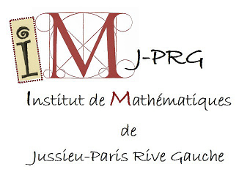| Résume | Defects can appear in algebraic extensions of valued fields when the residue characteristic is positive. They constitute a major problem in
the structure theory of valued function fields, which in turn has been shown to be of crucial importance in the open problems of local
uniformization in positive characteristic and the model theory of imperfect valued fields. Therefore it is desirable to gain a deeper
understanding of defects.
The title actually contains a contradiction: extensions with nontrivial defect are wild by definition and not tame. However, the title expresses
the observation that some defects appear to be more harmful than others.
In valued fields of positive characteristic defects have been classified to be dependent when they can be obtained from purely inseparable
extensions by a transformation, and independent otherwise.
There are several reasons to believe that the dependent defects are the more harmful ones. For example, Cutkosky and Piltant gave an example of
an extension of two-dimensional valued function fields consisting of a tower of two Artin-Schreier defect extensions where strong
monomialization fails. Work of Cutkosky, ElHitti and Ghezzi has shown that both of them have dependent defect.
Recently we extended the classification to the case of valued fields of mixed characteristic, overcoming the obstacle that they do not have
inseparable extensions. Building on this, we introducedsemitame fields which generalize the class of tame fields; the latter
have played an important role in results on local uniformization and the model theory of perfect valued fields. Semitame fields are close to
Gabber's deeply ramified fields, and thus also to perfectoid fields (but the latter do not fit our purposes well). We hope that important results
on tame fields and the structure theory of their valued function fields can be generalized to the case of semitame fields.
If time permits, I will also mention another result, which relates to a continuation of Cutkosky's and Piltant's study of valued function fields
in dimension 2. While such function fields may admit infinite towers of defect extensions, there are only finitely many essentially distinct
defects, in a sense that will be made precise in the talk.
This is joint work with Anna Blaszczok. |

